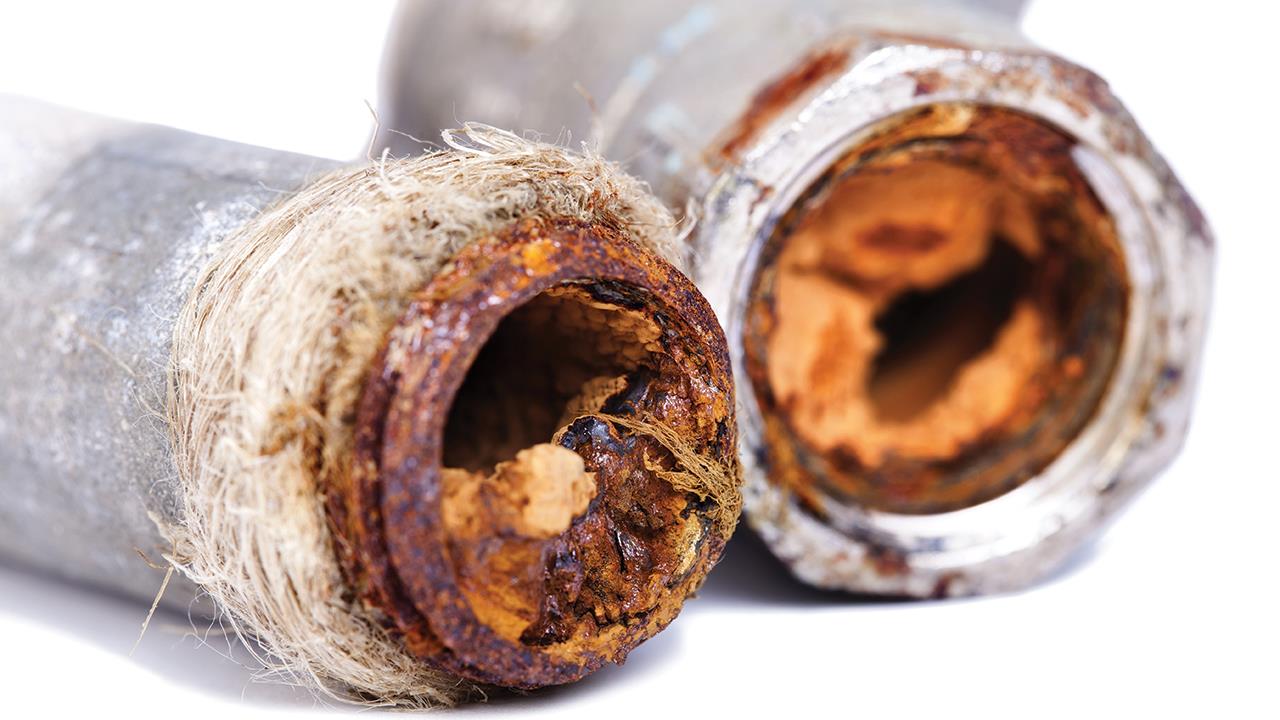

Toby Hunt, Managing Director at Guardian Water Treatment, looks at some of the problems that cause poor performance in commercial HVAC systems and explains how these risks can be mitigated.
Commercial HVAC systems are complex structures compared to their domestic counterparts. They need to work on a much larger scale to meet demand in multi-tenant office buildings or industrial warehouses, for example. In critical infrastructure, such as hospitals or data centres, heating and cooling systems must remain operational at all times – downtime is simply not an option.
Closed circuit water systems play a vital role in commercial heating and cooling. If corrosion is allowed to take hold within these systems, it can be very difficult and expensive to correct. Operational inefficiencies or failure can cause serious damage to expensive assets, with the cost of repair and downtime potentially running into the millions.
What can go wrong?
As the name suggests, closed circuit systems are sealed units which contain a fixed volume of recirculating water. Theoretically, this water should not be exposed to anything outside of the pipework. However, poor maintenance or heavy-handed water treatment can lead to oxygen ingress, which creates the ideal conditions for bacteria growth.
Oxygen ingress is the precursor to all corrosion in closed circuit water systems, yet the industry’s traditional method of checking condition does not detect oxygen levels. Instead, water sampling and corrosion coupons focus on bacteria and dissolved metals but, by the time these are detectable, the damage has already been done. Bacteria is at its most destructive during the sessile stage, as localised biofilm builds up on the pipe wall or colonises around pockets created by corrosion debris.
This bacterial slime can restrict water flow, contribute to reduced thermal efficiencies, and facilitate the growth of dangerous waterborne pathogens, such as legionella and pseudomonas. Once bacteria is free flowing, and therefore gets picked up through laboratory samples, its presence is simply an indicator of existing issues.
Prevention is better than cure
Without accurate data to hand, standard treatment usually consists of over-flushing and chemical dosing. While this might be effective against bacteria, in many cases it fails to identify and rectify the cause, leading to repeat issues and further corrosion of pipework and components.
A far more effective approach is to go back a step further and treat the root cause of corrosion. If oxygen can be detected before bacteria has had a chance to thrive, interventions can be preventative rather than reactive, environmental impact can be kept to a minimum and, most importantly, systems will perform better with less risk of failure.
Real-time results
Unlike other areas of building services, the water treatment sector has held onto its traditional maintenance and monitoring methods for too long. Technological innovations in recent years have brought water monitoring in-line with other areas of building management, and it is no longer necessary to wait days or weeks for sample results to come back from the laboratory.
The latest remote monitoring technology protects critical HVAC systems by continuously tracking a range of parameters that cause corrosion in closed-circuit water systems, including oxygen, pH, and inhibitor levels, as well as pressure and corrosion rates.
Readings are taken every 15 minutes, 24 hours a day, and live data is delivered direct to facilities managers or maintenance teams, with immediate alerts issued if critical levels are exceeded. With this vital information to hand, water hygiene is improved, pipework protected, and maintenance regimes can be better informed.
Chemical requirements are not eradicated, but usage can be tailored and reduced, rather than ignorantly dished out as a precautionary measure.
It’s never too late
Remote monitoring technology has revolutionised the sector to the extent that its approach is now recommended in BSRIA’s BG50 best practice guidance on pre-commission cleaning. The benefits do not end at handover.
Real-time monitoring can be used throughout a commercial water system’s life, or as a one off ‘health-check’ for a set period, used to identify the root cause of an issue. At whatever stage remote monitoring is employed, the result is always targeted, effective and, crucially, preventative water treatment.
From consulting, construction, and pre-commission cleaning, through to handover and beyond, accurate monitoring and preventive maintenance play a key role throughout the whole life of a commercial HVAC system, mitigating risks and ensuring that buildings (and the people that use them) remain healthy, efficient, and operational
If you'd like to keep up-to-date with the latest developments in the heating and plumbing industry, why not subscribe to our weekly newsletters? Just click the button below and you can ensure all the latest industry news and new product information lands in your inbox every week.